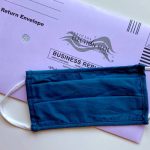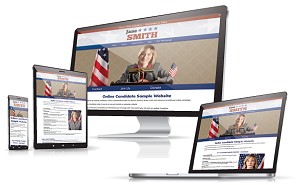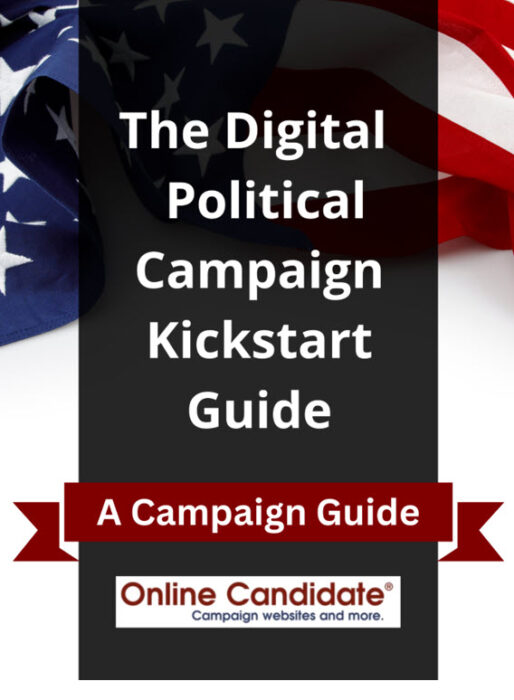Reaching early voters is more important than ever, particularly for primaries and local elections, where voter turnout can make all the difference in winning.
Two methods for casting a ballot during an early voting period:
- Registered voters that can vote in person at designated early-voting sites in their county.
- Absentee voting that allows for voting by mail.
Political candidates and campaigns can help supporters by providing education and information about the process. This includes when absentee ballots are sent or available, how and where the ballots can be cast, what requirements are needed to make a ballot valid.
The rules governing absentee and early voting vary depending on state. For example, some states require an excuse for voting by mail. Check your state or local voting regulations for the latest changes.
Inform and reach early voters in a campaign
Keep your campaign website up to date on the latest news throughout the election season. Encourage visitors to follow your campaign through the other channels. The more ways you can reach a voter, the better. This is even more effective if you can get people to specifically opt in for contact, such as through email.
Target voters who support you, particularly those who have a history of casting early ballots.
Digital is now firmly a part of any politician’s media plan. Online advertising extends and complements the reach of television and radio. Here are several popular ways to reach voters and constituents.
Social media advertising to reach supporters
Social Media marketing works well because you can target your specific voting audience. For example, Facebook’s targeting options include age, region, educational background and more. You can even reach voters based on their connections. Tailoring your ads to specific audiences works best.
Note that Facebook and Twitter now have verification processes for political and issue-based advertising. This can take some time to complete, so you will want to start this process long before you plan to run any ads.
Pay Per Click (PPC) advertising to target candidate searches
PPC ads are text ads that appear on Google, Bing and other search engines. You bid on specific search keywords or phrases and your ad appears at the top of the search engine results. You only charged when people click on the ad. PPC advertising is also the easiest to track. Google Adwords and Bing Ads are the two largest PPC services.
Display ads on sites your voters visit
These are visual ads (banners ads) that appear on third party websites. Most display advertising is bought either on a flat rate or through a Cost Per Thousand (CPM) model. For example, 100,000 ad impressions at a $10 CPM costs $1,000. To calculate the amount paid per impression, divide the CPM by 1,000. For example, a $10 CPM equals $.01 per impression.
Website ads: Local newspaper websites are a good place to run display ads. Their visitors are already engaged in news and likely more interested in political advertising.
IP Targeting: IP Targeting uses individual IP addresses to reach specific voter households. It matches IP addresses to street addresses and then displays your ads on websites they visit across the internet.
Related: 9 Tips For More Effective Political Banner Ads
Retargeting/remarketing to reach out a second time
Retargeting is as way to display advertisements to people who show an interest in your campaign.
When a user goes to your website, a tracking pixel is set in the user’s browser. After that, the user will see display banners about your campaign on other websites as they surf the web. Retargeting will remind them about your campaign.
You can set this up yourself through Facebook Remarketing and Google Remarketing. You may find it easier to set up remarketing campaigns through a third-party platform such as SharpSpring.
Related: How Does Retargeting Grow Your Political Campaign?
IP Targeting to voter’s physical addresses
More campaigns are starting to use IP targeting method to directly segment and reach voters. Physical mailing addresses can be translated to IP addresses, allowing ads to be targeted to computers and mobile devices a household basis.
You can reach members of your party, households matching a certain demographic or even specific geographic locations. IP-backed banner ad campaigns have been shown to be more effective than other online ad methods, like traditional banner advertising.
Learn more about political campaign IP Targeting.
Online video marketing
Most political candidates who use video have a presence on YouTube. A wide variety of video ad options are available. You can target specific audiences by interests and keywords. You can also measure results such as views, click through rates, and amount of video time watched.
One popular ad options is the bumper video. This is a video ad is 6 seconds or shorter that plays before, during, or after another video. Viewers do not have the option to skip the ad. The cost is based on the number of ad impressions shown.
Campaign videos can also be posted and promoted through your social media accounts.
Related: 5 Political Campaign Video Ideas
Email marketing
We’ve saved one of the most powerful tools for last. For email marketing, you first need to build a list of email addresses. Start collecting addresses early through your campaign website or even from offline events. Always ask or get permission before adding any email addresses. Political spam is just as annoying as the regular kind.
Don’t run your email campaign through a personal email account. Use an email marketing service to send emails. These services include email templates, autoresponders and the ability to automatically add and remove subscribers. They also provide better deliverability for mass mailings.
How do you reach voters online? Political candidates can cut through the online clutter and directly reach anyone. The catch is, you need to pay for that access.
Related:
Offline voter outreach
- Early Canvassing: If you are going to be walking door-to-door, you should concentrate on the precincts and areas where a large turn out is needed to win. The candidate might want to work these areas in person to reach voters.
- Mailers: Early voting mailers should be targeted to specific households and provide information about the dates and process for voting ahead of Election Day. You can also include websites or links for additional online resources.
- Phone calls: You can have volunteers or use phone calling services with scripts to help inform and provide early voting information to those who may need it.
Pay attention to early voting dates and requirements. With the large number of early voters, start planning ahead of time to find and reach out to them. For those genuinely undecided voters, getting to them first could mean getting their support. Every early ballot cast is one less ballot you need to worry about on Election Day.
Already have your early voter list? By matching physical addresses to specific online IP addresses, IP Targeting lets you send banner ads to key voter households with unprecedented precision. Learn how you can reach voters through IP Targeting.
So You Want To Run for County Government? Here’s How To Get Started »








